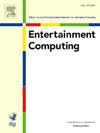使用机器学习识别青少年娱乐互动技术使用的主要预测因素:来自纵向研究的证据
IF 2.8
3区 计算机科学
Q2 COMPUTER SCIENCE, CYBERNETICS
引用次数: 0
摘要
了解支持互动技术用于娱乐的关键因素是至关重要的,这可以为减少青少年过度使用互动技术用于娱乐的负面影响提供准确的证据。利用机器学习方法,我们旨在通过横断面和纵向设计,全面了解多种个人和社会背景因素如何预测青少年娱乐互动技术的使用。通过比较7种机器学习算法,我们发现Random Forest和LightGBM在两个时间点上的模型性能优于其他算法。这两种算法被用来评估28个潜在因素的预测能力,表明性别和父母的在线监督已经被证明是青少年娱乐互动技术使用的持续相关性。家庭电脑和互联网接入的可及性以及同伴影响是重要的预测因素,特别是在T1娱乐中使用互动技术方面。在第一阶段,互动科技在娱乐上的使用和师生关系是预测因素,特别是在第二阶段,互动科技在娱乐上的使用。这项研究强调了多方面方法的力量,考虑到个人和社会因素,以了解青少年的娱乐技术使用,强调了支持关系的积极作用。本文章由计算机程序翻译,如有差异,请以英文原文为准。
Using machine learning to identify the top predictors of adolescent’s interactive technology use for entertainment: Evidence from a longitudinal study
Understanding the critical factors that underpin interactive technology use for entertainment is vital, which can provide accurate evidence to reduce the negative effects of excessive interactive technology use for entertainment among adolescents. Capitalizing on the machine learning approach, we aimed to provide a holistic understanding of how multiple personal and social-contextual factors predicted adolescents’ interactive technology use for entertainment across cross-sectional and longitudinal designs. By comparing seven machine learning algorithms, we found that the Random Forest and LightGBM outperformed others in model performance at two-time points. These two algorithms were used to assess the predictive capacity of 28 potential factors, indicating that gender and parental online supervision have been demonstrated the sustained correlates of adolescents’ interactive technology use for entertainment. The accessibility of home computers and internet access, along with peer influence, were significant predictors, particularly for interactive technology use for entertainment at T1. The interactive technology use for entertainment at T1 and teacher-student relationships were predictive factors specifically for interactive technology use for entertainment use at T2. This research underscores the strength of a multi-faceted approach, considering both personal and social factors, to understand adolescents’ technology use for entertainment, highlighting the positive role of supportive relationships.
求助全文
通过发布文献求助,成功后即可免费获取论文全文。
去求助
来源期刊

Entertainment Computing
Computer Science-Human-Computer Interaction
CiteScore
5.90
自引率
7.10%
发文量
66
期刊介绍:
Entertainment Computing publishes original, peer-reviewed research articles and serves as a forum for stimulating and disseminating innovative research ideas, emerging technologies, empirical investigations, state-of-the-art methods and tools in all aspects of digital entertainment, new media, entertainment computing, gaming, robotics, toys and applications among researchers, engineers, social scientists, artists and practitioners. Theoretical, technical, empirical, survey articles and case studies are all appropriate to the journal.
 求助内容:
求助内容: 应助结果提醒方式:
应助结果提醒方式:


